July 2019
July 11, 2019
Shoo: The Deterrer of Pooping Dogs
Thirteen-year-old Noah De La Paz of California has invented a device to stop dogs from pooping on the lawn of his family’s house. It uses a camera and image-detection software. When a dog is identified, his device emits a high-pitched sound to encourage the dog to move on. Although still in the prototype stage, Noah hopes to eventually bring his invention to market.I can see some potential problems with his invention. Such as that it doesn't seem to differentiate between pooping and non-pooping dogs. But even so, it sure would beat the currently most popular method of preventing unwanted poopers, which is to put up angry, threatening signs on your lawn.
More info: Spectrum News
Posted By: Alex - Thu Jul 11, 2019 -
Comments (4)
Category: Inventions, Excrement, Dogs
Sebastian Cabot’s “Like A Rolling Stone”
Posted By: Paul - Thu Jul 11, 2019 -
Comments (0)
Category: Ineptness, Crudity, Talentlessness, Kitsch, and Bad Art, Music, 1960s, Cacophony, Dissonance, White Noise and Other Sonic Assaults
July 10, 2019
Death Awareness Cafe
It's a coffee shop that encourages you to contemplate the Grim Reaper while sipping your cup of Joe. Seems like a perfect place to serve those Decomposition Cupcakes we posted about a few months ago.More info: upi.com
(You can find a transcript of what the guy in the video is saying here.)
Posted By: Alex - Wed Jul 10, 2019 -
Comments (2)
Category: Business, Death, Coffee and other Legal Stimulants
Signs of Health
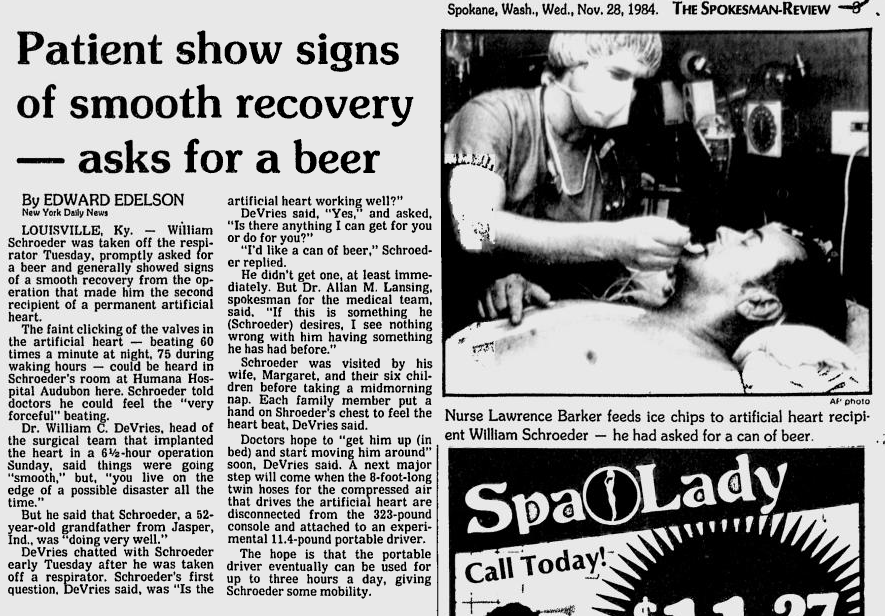
Alas, this positive sign was not an accurate forecast of the fate of William Schroeder.
Article source.
Posted By: Paul - Wed Jul 10, 2019 -
Comments (2)
Category: Body, Death, Health, Surgery, 1980s, Alcohol
July 9, 2019
Wrong-Way Race
The runners must have been thinking that it seemed like the longest seven miles ever.
Sheboygan Press - Mar 23, 1970
Posted By: Alex - Tue Jul 09, 2019 -
Comments (1)
Category: Sports, 1970s
Follies of the Madmen #433
Our zippers are for crazy people.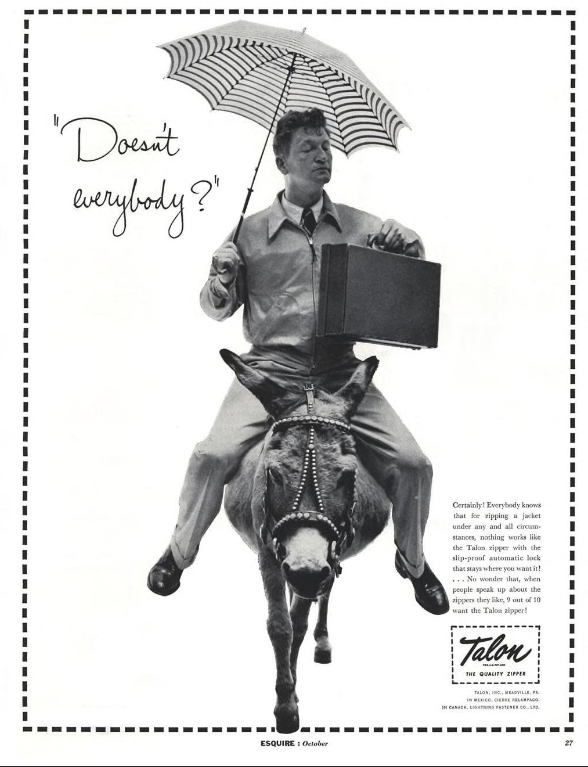
Source.
Posted By: Paul - Tue Jul 09, 2019 -
Comments (3)
Category: Business, Advertising, Fashion, 1950s, Brain Damage
July 8, 2019
Colgate Kitchen Entrees
One of the classic brand-extension blunders of all time has to be when toothpaste-maker Colgate decided to come out with a line of frozen dinners. The story is told in many places, and it's usually described as having occurred in 1982. For instance, here's the HuffPost's take on it:Lots of other sites refer to this as having happened in 1982, such as here, here, and here. But when I took a closer look at the story I couldn't find any primary sources from 1982 about it. But there are several 1960s-era sources (Washington Food Report, Weekly Digest) that refer to Colgate having test-marketed a line of frozen dinners in Madison, Wisconsin in 1964. A 1966 article in Television Age magazine offered some insight into what inspired the company to do this:
So, unless someone can find some primary sources that indicate otherwise, I'm going to assume that the Colgate Kitchen debacle actually happened in 1964, not 1982. And it was only a test-marketing trial run, not a full product roll-out. It would definitely be bizarre if, after the 1964 failure, Colgate tried the same thing again in 1982.
There's a couple of images of Colgate Kitchen entrees floating around the Internet, but I think they're all photoshops or mock-ups. For instance, the one below is a recent mock-up created by the Museum of Failure in Sweden.
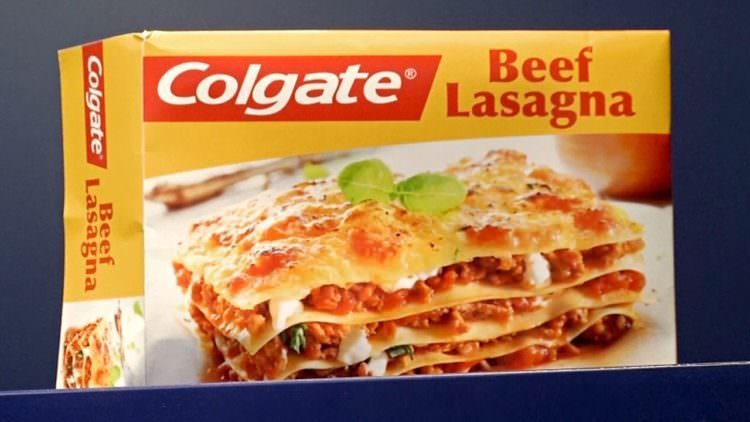
Posted By: Alex - Mon Jul 08, 2019 -
Comments (9)
Category: Business, Products, 1960s
Macho Cologne by Faberge
Does the bottle resemble a manly hammer?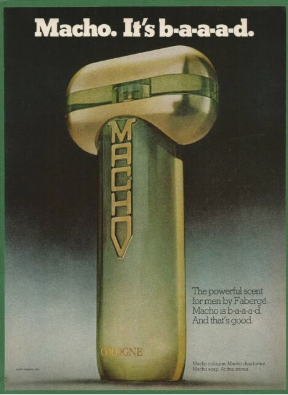
Or does it resemble something else?
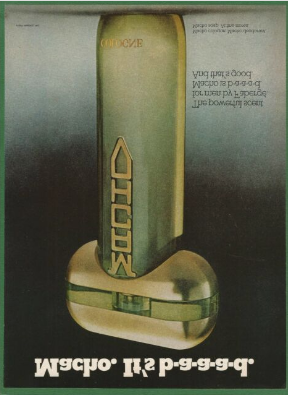
Entry at perfume database.
Posted By: Paul - Mon Jul 08, 2019 -
Comments (3)
Category: Ambiguity, Uncertainty and Deliberate Obscurity, Innuendo, Double Entendres, Symbolism, Nudge-Nudge-Wink-Wink and Subliminal Messages, 1970s, Perfume and Cologne and Other Scents
July 7, 2019
Spontaneously Combusting Debit Cards
Police in Cheshire, England recently warned of an unusual scam letter being sent around. Apparently authored by officials at Barclays Bank, it informed people that their debit cards were at risk of spontaneous combustion and needed to be returned (to an address in India):
News of this strange and obvious scam then made its way into various newspapers, such as the manchester evening news.
But the scam wasn't what it appeared to be. It was actually a case of satire being mistaken for news. The author of the letter was blogger Simon Harris who, back in 2018, had written and posted a picture of it as a joke.
Posted By: Alex - Sun Jul 07, 2019 -
Comments (4)
Category:
The Rockin’ Ramrods, “Don’t Fool With Fu Manchu”
Posted By: Paul - Sun Jul 07, 2019 -
Comments (1)
Category: Literature, Mad Scientists, Evil Geniuses, Insane Villains, Music, 1960s
| Get WU Posts by Email | |
|---|---|

| Who We Are |
|---|
| Alex Boese Alex is the creator and curator of the Museum of Hoaxes. He's also the author of various weird, non-fiction books such as Elephants on Acid. Paul Di Filippo Paul has been paid to put weird ideas into fictional form for over thirty years, in his career as a noted science fiction writer. He has recently begun blogging on many curious topics with three fellow writers at The Inferior 4+1. Chuck Shepherd Chuck is the purveyor of News of the Weird, the syndicated column which for decades has set the gold-standard for reporting on oddities and the bizarre. Our banner was drawn by the legendary underground cartoonist Rick Altergott. Contact Us |

